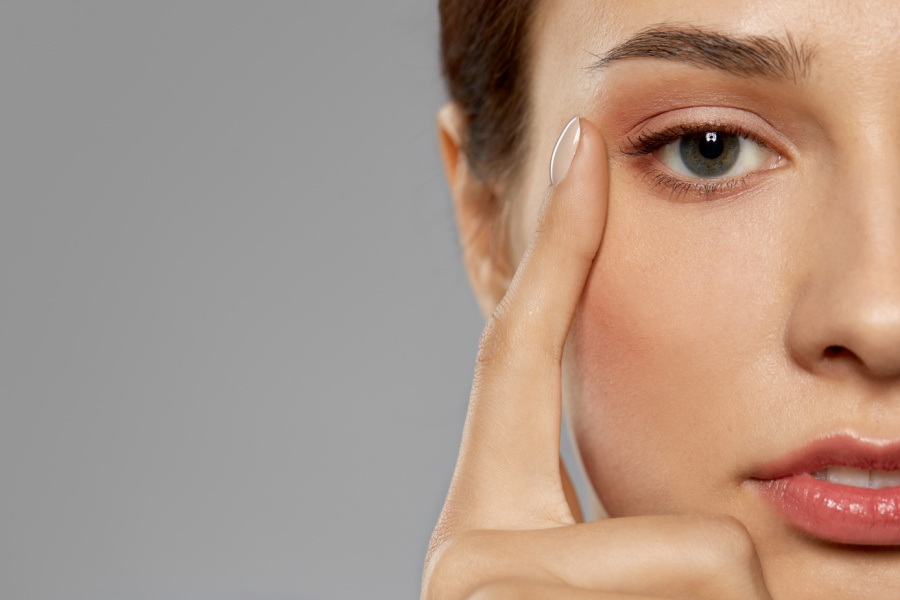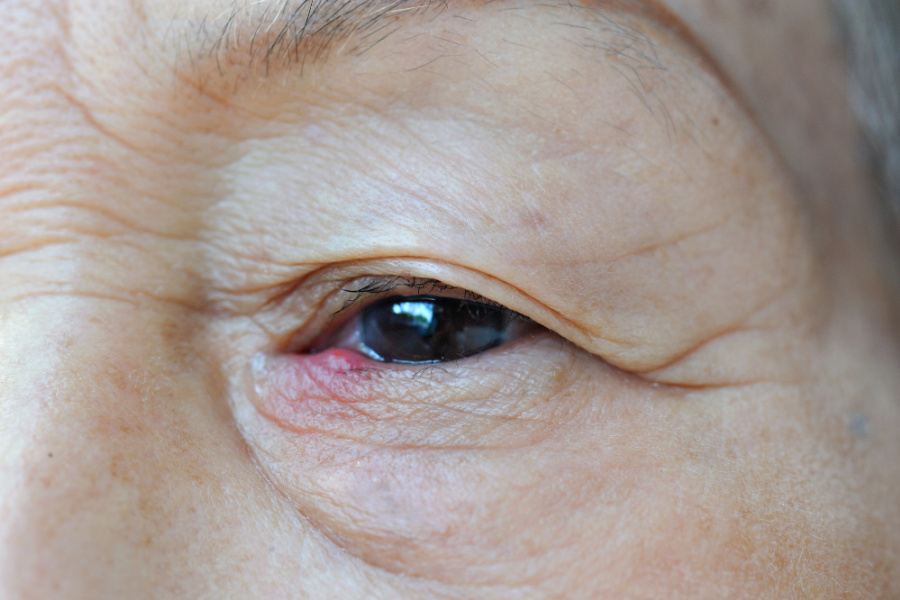
Eyelid surgery, also known as blepharoplasty, is a popular cosmetic procedure designed to enhance the appearance of the eyes by addressing drooping or sagging eyelids. It can also help reduce any discomfort or vision issues caused by excess skin around the eyes.
Although it’s considered a relatively straightforward procedure, it’s natural to feel a little apprehensive about surgery in such a delicate area.
This guide explains what blepharoplasty involves, how it can improve the look and function of your eyelids, and what you can expect during the recovery process.

As we get older, the skin around the eyes naturally loses elasticity and begins to droop or sag. This can create the appearance of hooded or heavy eyelids, or under-eye bags, making the eyes look tired. In some cases, small pockets of fat can also develop around the eyes, contributing to puffiness or uneven contours.
While ageing is the most common reason, other factors can cause excess skin around the eyes too — such as long-term allergies or infections, smoking, or prolonged sun exposure, all of which can stretch and damage the delicate skin in this area.
For some people, this excess skin can become heavy enough to interfere with their vision or make it difficult to fully open their eyes. Others may simply want to refresh their appearance and restore a more youthful, alert look.
Whatever the reason, eyelid surgery (blepharoplasty) can help by removing or tightening excess skin and fat — offering both functional and cosmetic benefits.
Eyelid surgery (blepharoplasty) can be performed using local anaesthetic with sedation or general anaesthetic, depending on the individual and the complexity of the procedure.
With local anaesthetic and sedation, the area around your eyes is numbed so you won’t feel any pain. You’ll remain awake, but you’ll feel calm, relaxed, and slightly drowsy throughout the procedure.
Alternatively, some patients may have the surgery under general anaesthetic, meaning you’ll be fully asleep for the duration of the operation.
Your surgeon will discuss both options with you during your pre-operative consultation, taking into account your preferences, comfort level, and medical suitability. In most cases, blepharoplasty is a day procedure, allowing you to go home the same day once you’ve recovered from the anaesthetic.
The details of your blepharoplasty will depend on whether you’re having upper eyelid surgery, lower eyelid surgery, or both. In general, the procedure involves carefully removing or tightening excess skin, muscle, or fat to restore a smoother, more youthful appearance around the eyes.
An upper blepharoplasty focuses on improving the tone and contour of the upper eyelids — particularly the skin between the eyebrows and the eyelashes. It helps reduce heaviness, creasing, and sagging, which can make the eyes appear tired or hooded.
During the procedure, the surgeon makes a small incision along the natural crease of the upper eyelid to minimise visible scarring. Through this incision, any excess skin, fat, or muscle is carefully removed or repositioned. The incision is then closed with fine dissolvable stitches, which gradually disappear over the following weeks.
Upper eyelid surgery typically takes about one hour to complete.
A lower blepharoplasty targets concerns beneath the eyes, such as bags, puffiness, loose skin, and fine creases. It can also help to smooth and brighten the under-eye area, creating a fresher, more rested appearance.
The surgeon will make a small incision either just below the lower lash line or inside the lower eyelid, depending on your needs and the chosen technique. Through this incision, excess skin and fatty tissue are removed or reshaped to achieve a smoother contour.
The incision is then closed with dissolvable stitches or small suture strips. If suture strips are used, they are usually removed about a week after the procedure.
Lower eyelid surgery generally takes up to two hours, as it tends to be a more delicate and detailed operation than upper eyelid surgery.
Following eyelid surgery, you’ll be given pain relief medication to manage any discomfort once the anaesthetic wears off. In some cases, eye pads may be applied for a short period to help reduce swelling and bruising.
It’s normal for the treated area to feel tender, swollen, and bruised for several days after the procedure. Your eyes might also feel slightly dry or irritated, especially if both upper and lower eyelids were treated.
Your surgical team will provide detailed aftercare instructions, including how to gently clean the area and protect your eyes while they heal. You may also be prescribed antibiotic ointment to prevent infection and support the healing process.
Most swelling and bruising will begin to subside after about a week, though it can take a few months for the skin to fully settle and for the final results to become visible.
In general, you’ll need around one week off work and normal activities to rest and recover. It’s also best to avoid driving or any strenuous activity until your surgeon confirms it’s safe to do so.

Following your surgeon’s advice carefully will help ensure a comfortable and successful recovery. Here are some general tips to support the healing process:
With proper care and adequate rest, most people experience a smooth recovery and enjoy lasting results from their eyelid surgery.
It’s completely normal to experience swelling, bruising, and mild discomfort for about a week after eyelid surgery. Some light bleeding from the incision sites can also occur in the early stages of recovery.
As with any surgical procedure, there are potential side effects and risks to be aware of, including:
Most of these effects are short-lived and improve as the healing process continues. However, you should contact your medical team immediately if you experience any of the following:
Prompt medical attention will help ensure any complications are managed quickly and effectively.